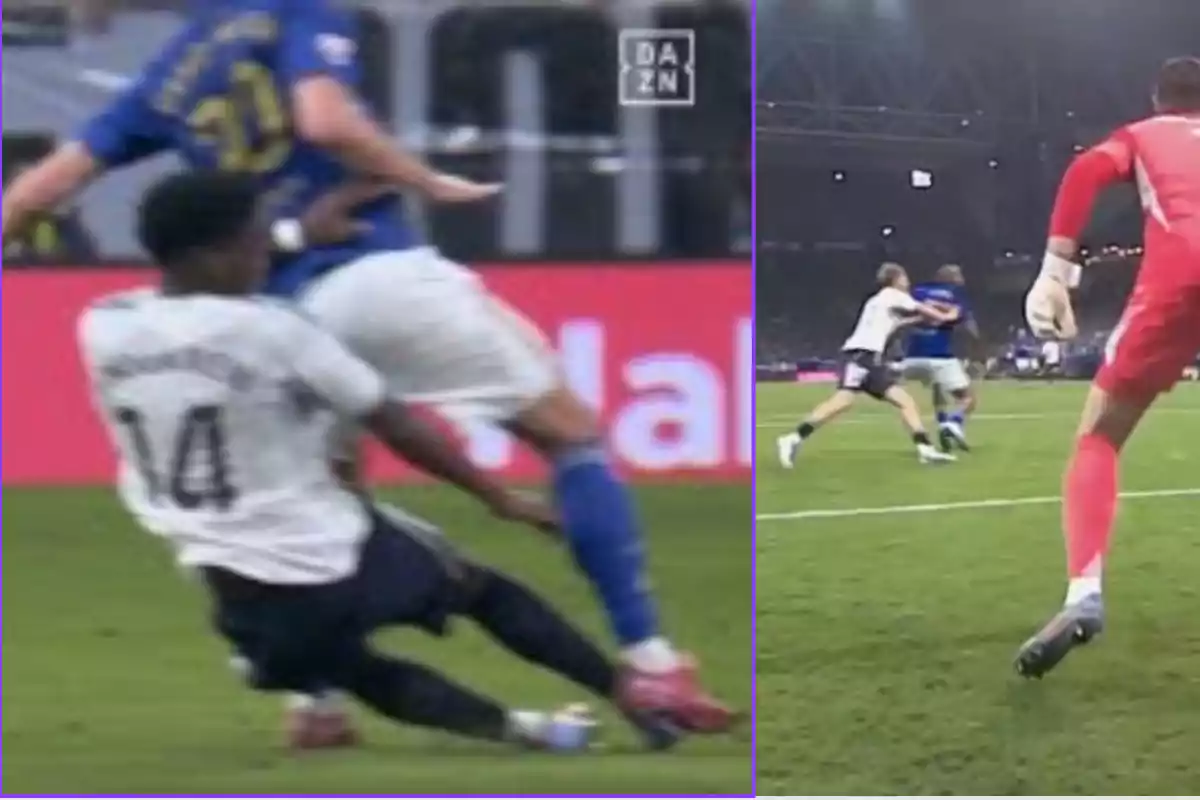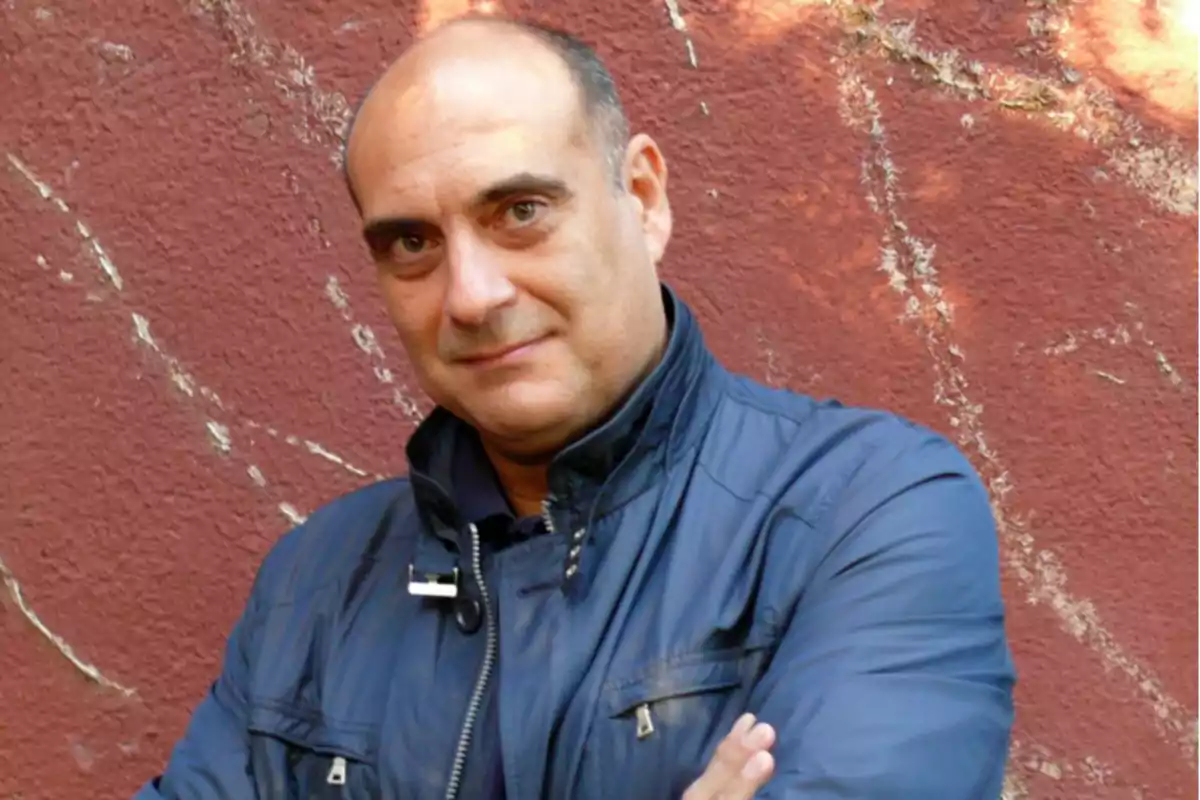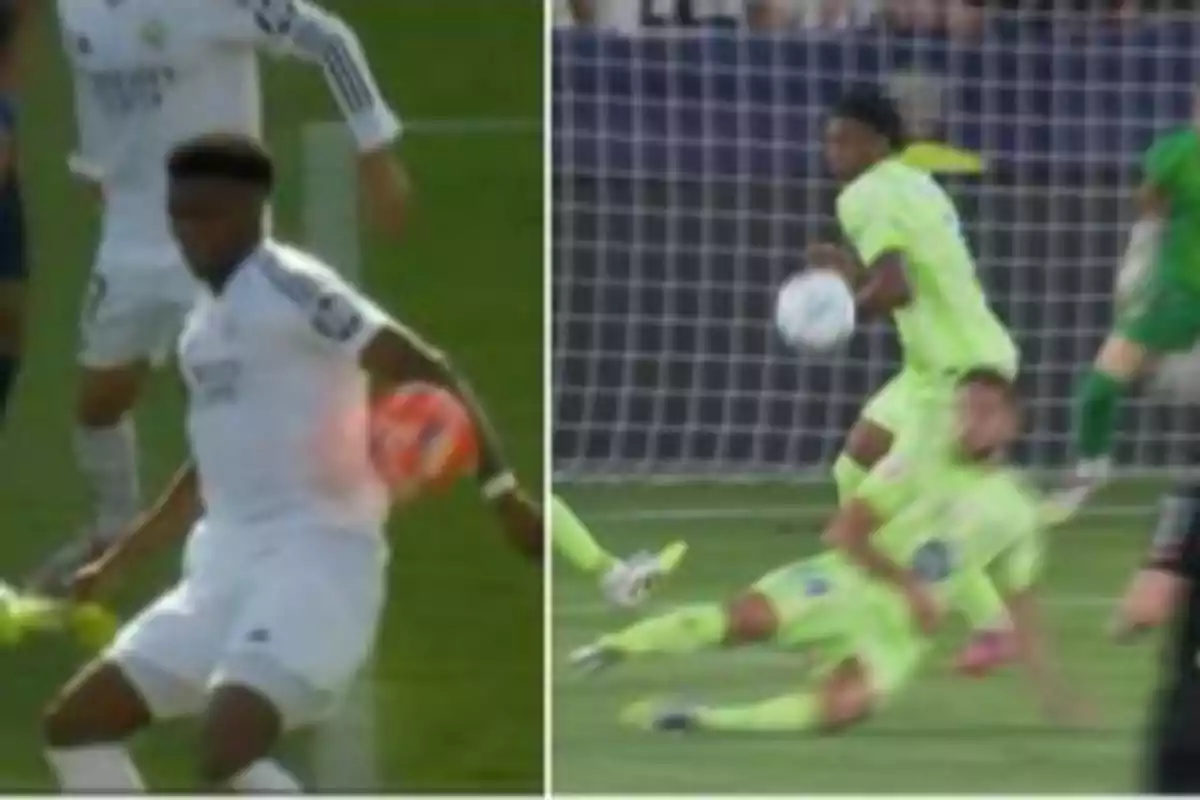The refereeing controversy reignites the debate between Barça and Real Madrid.
What has happened in recent matchdays has served to show the capacity of sociological and media-driven Madridism to distort reality and always present it in favor of the white team.
Xavi Bosch, in his article in Mundo Deportivo, has touched a nerve. He recalls a key play from last season's Clásico and compares it to the latest decision by Hernández Hernández against Barça.
The result, as expected, shows a double standard that systematically favors Real Madrid.
The Tchouaméni case and Courtois's shadow
In last season's Clásico, Tchouaméni committed a clear handball inside the box. Hernández Hernández decided not to penalize it with a penalty, arguing that Courtois was right behind.

Therefore, it wasn't considered a clear goal-scoring opportunity. The interpretation was, at the very least, surprising.
What was then presented as an impeccable technical criterion has now been buried under tons of silence. Because in the most recent action, that justification was no longer valid.
The invented penalty against Balde
The same referee awarded a penalty in the last matchday in favor of Levante and against Barça. It was a play in which the ball struck Alejandro Balde's arm.
The ball was heading straight for the Barça full-back, and if Balde didn't have arms, the trajectory would have ended up hitting his body anyway.
Joan García was behind. Now the presence of a goalkeeper wasn't a sufficient argument for the same media that justified Tchouaméni's handball.
The result is devastating: what served as an excuse for Courtois doesn't count for Joan García. The contradiction is so obvious that even a child can see it. In the media narrative, everything is covered up.
Raphinha targeted, Tchouaméni pardoned
The manipulation doesn't end there. When Raphinha made a hard tackle in Mallorca, media outlets close to Real Madrid cried out for a straight red card. They clung to that to talk about a robbery in favor of Barça.
Days later, in Oviedo, Tchouaméni was involved in an almost identical action in the play that led to Real Madrid's first goal. Back then, the play went unnoticed and was quickly erased from public debate.
The contrast is stark: what is considered an intolerable aggression in a Barça player becomes a mere anecdote for a Madridist.
"It's not enough," they usually say to justify it. This is how the narrative is built that fuels the idea that referees always help Barcelona.

Villarato, Negreira and the eternal manipulation
Media-driven Madridism has turned a victimist discourse into a habit, repeating the same arguments over and over. Villarato, Negreira, or Yolanda Parga, if necessary. Always with the same goal: to point to Barça as a club protected by referees.
The reality, as Xavi Bosch reminds, is quite different. Doubtful refereeing decisions usually go in favor of the white team, and when it comes to interpreting them, the color of the jersey shapes the narrative.
The problem isn't the isolated play, but the ongoing manipulation that makes the fans end up believing a lie repeated a thousand times.

